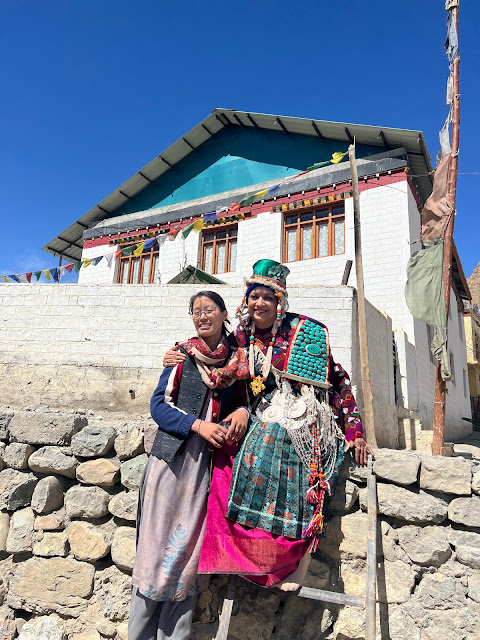An innate desire of humans is to look beautiful and that’s why jewellery was invented. Surprisingly, it was not the ‘Homo sapiens’ but the ‘Neanderthals’ who first used jewels to beautify themselves around 130,000 years ago – imagine! Early on jewelry was made of shells, bones, and stones but later metals took over with gold and silver becoming the preferred choice.
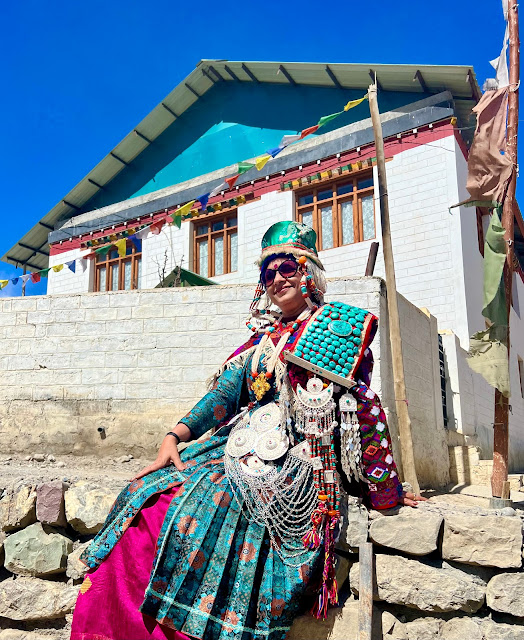 The Bridal Jewellery of Spiti
The Bridal Jewellery of Spiti
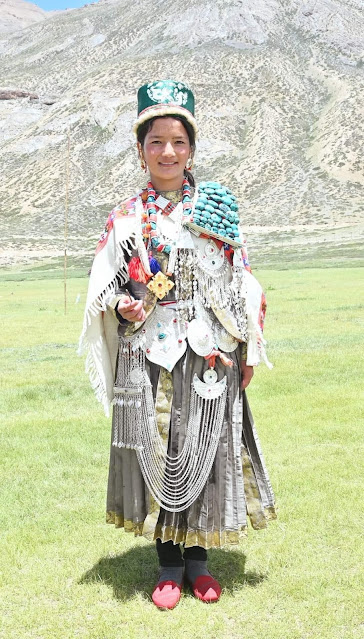
Did you know that initially jewellery was worn more as amulets to ward off evil eyes and to secure garments? As most dresses were wrapped around, they required securing. With time, jewels took on an ornamental quality and became immensely treasured. Men were equally enamored, and jewels adorned both genders the world over in all cultures.
Jewellery is a valuable archaeological source as well, signifying a lot of things— the wearer’s personality, status, and wealth; the richness of their culture along with their traditional and religious beliefs. Sometimes it can tell the story of trade or geographical resources.
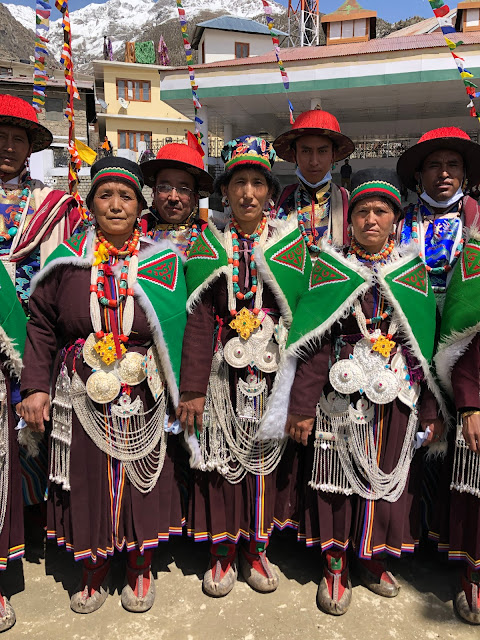
“I have enough jewelry,” said no woman ever! For most women, jewelry is their prized possession, not to be shared easily. So how would you feel if someone takes out her entire ‘Bridal jewelry’ and happily offers that you wear it? And calls her relatives to help with dressing.
Ecstatic and humbled—that’s how I felt when I visited Kaza recently, and had the pleasure of wearing Dolma Cherring’s exquisite bridal jewelry. I also learned about the beautiful customs of a lovely community – the Spiti people of Kaza.
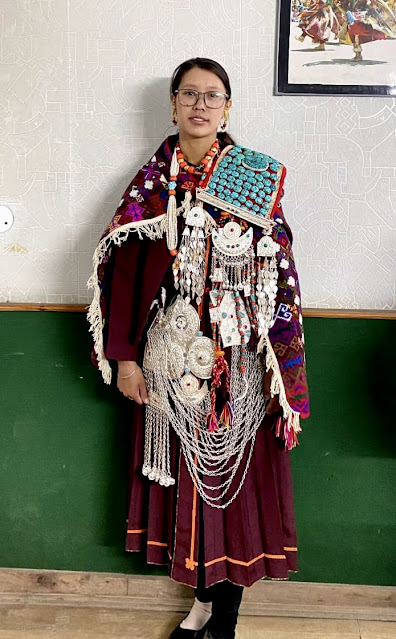
Nestled amidst the high mountain ranges of Himachal, in a cold desert environment, the Spiti or Piti – as known locally – means the ‘middle land.’ Land between Tibet and India. Their culture is unique, and so is their jewelry.

I am fond of collecting traditional jewelry, hence inquired about it during my recent trip to Spiti Valley. As luck would have it, Kesang Rapchik (The President of the Taxi Drivers Union and our driver for our stay in Kaza) suggested that his wife could dress me up as a traditional bride. I readily agreed and what a memorable experience it turned out to be!

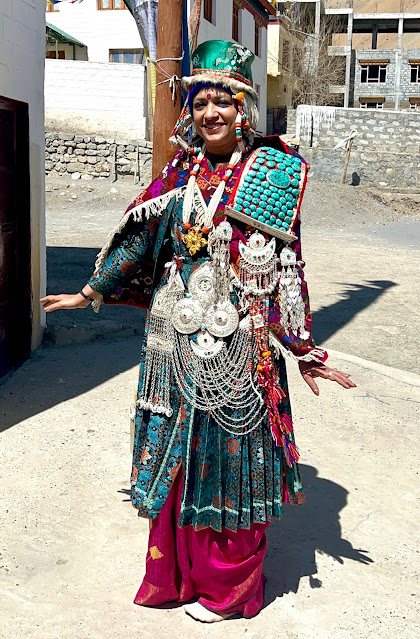
Spiti jewelry is similar to Kinnaur, Lahaul, and Leh and is mainly made of silver with many precious and semi-precious stones – turquoise, coral, and pearls. The tribal jewelry is influenced by Tibetan designs that have been preserved through the ages. The pieces are heavy and worn covering head to waist, and nothing on the feet due to climatic conditions. The Spitian women also don’t pierce their noses and wear any nose jewelry.
Mostly designed to secure the traditional dress, especially the shawls, and to cover the head and ears to protect against the cold. Interestingly the ear flaps of the headgear (Perak) were added after one of the queens of Spiti developed an ear infection and required protection from the cold winds!
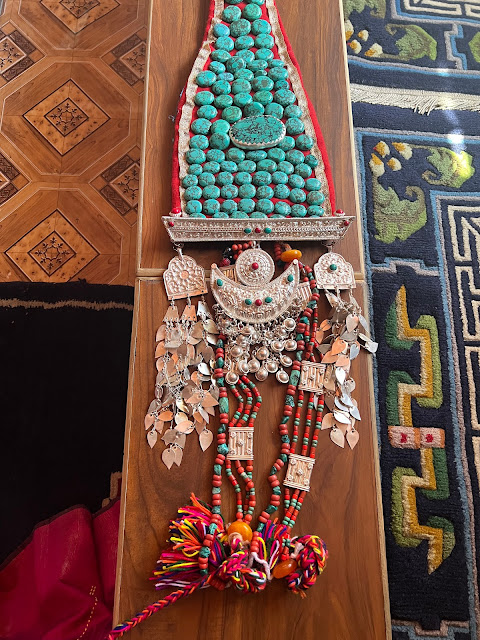
The torquise were earlier bought from Tibet and were very expensive but now artificial Torquise is also available and it reduces the cost of Berag.
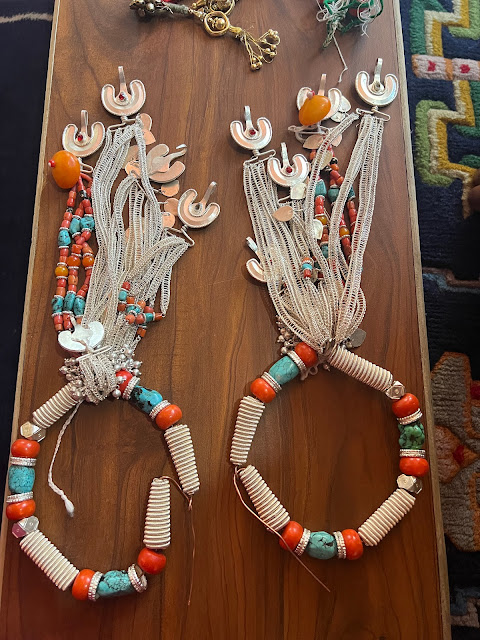


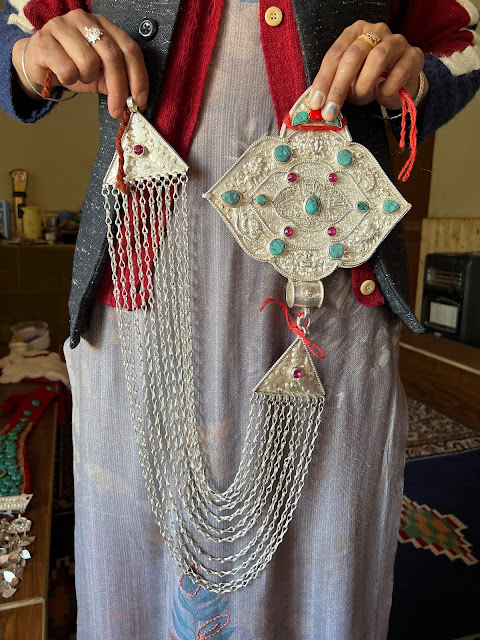
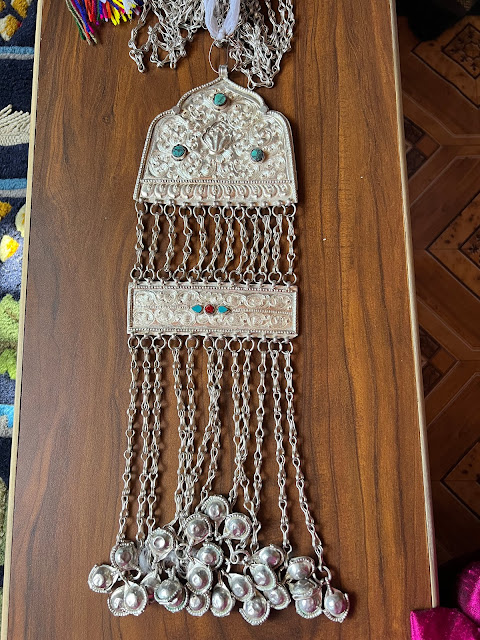
Jewellery holds a special place in the lives of the women of Spiti. I could feel the pride and love Dolma had for her jewelry in the way she explained them to me. There are also many customs attached to jewelry in their culture.
The head ornaments like Berag and Perak are not worn by unmarried women. The young girls wear simple jewelry; heavy and elaborate jewelry is only for married women.
In older times only ‘Khangchen’ homes (the high noble families) and not the ‘Khing Chung’ homes (the low-class families) could afford the entire Berag set with real Turquoise from Tibet. Nowadays, most women that desire a full set of bridal jewelry get it made.
The jewelry is gifted by the bride’s parents and the boy’s side does not gift jewelry to their daughters-in-law (though these traditions have become more relaxed now). It’s like pooling the resources in the new marriage – the bride brings jewelry and the boy his lands. The traditional jewelry passes from the mother to the eldest daughter only.
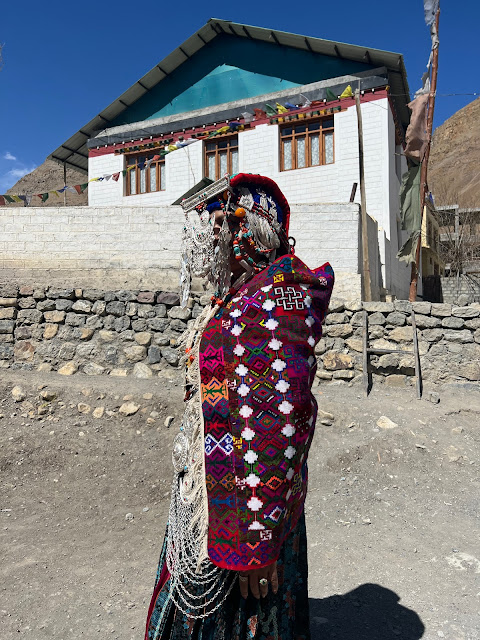
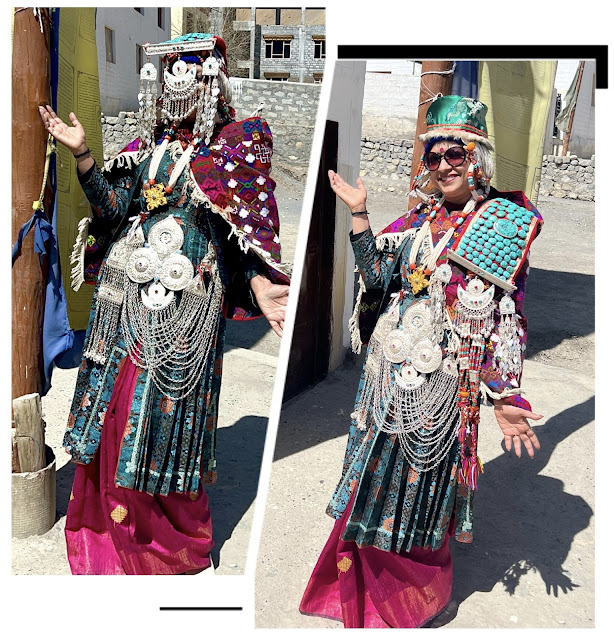 A bride covers her face and a married woman wears the Berag on her shoulders
A bride covers her face and a married woman wears the Berag on her shoulders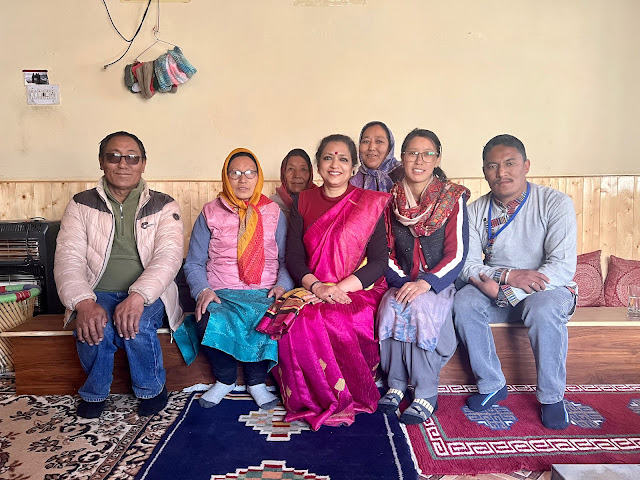 With the loving family of Rapchik and Dolma
With the loving family of Rapchik and DolmaPersonally, I was delighted to dress up as a Bride again after 32 years! So fascinated I was with my bejeweled look, that I ordered some jewelry for myself and my daughters from the local jeweler. Thank you to Dolma and her aunts for all the love and affection and pampering they showered on me. More than the jewellery it is their generosity that captured my heart.

Dr. Anurita Saxena is an Associate Professor of History and teaches in the Government College for Girls in Shimla. She is a post – doctorate from JNU with specialisation in Environmental History. She hails from UP but has made Himachal her home since past 32 years. She has keen interest in all aspects of Himachali crafts, cuisine and culture. An enthusiast for life, she loves to trek, play Golf and Bridge, sing and dance and be a Vipassna practitioner. She conducts sessions on Communication Skills and personal grooming and is a Casual compère with Himachal Doordarshan. She can be contacted at [email protected]


